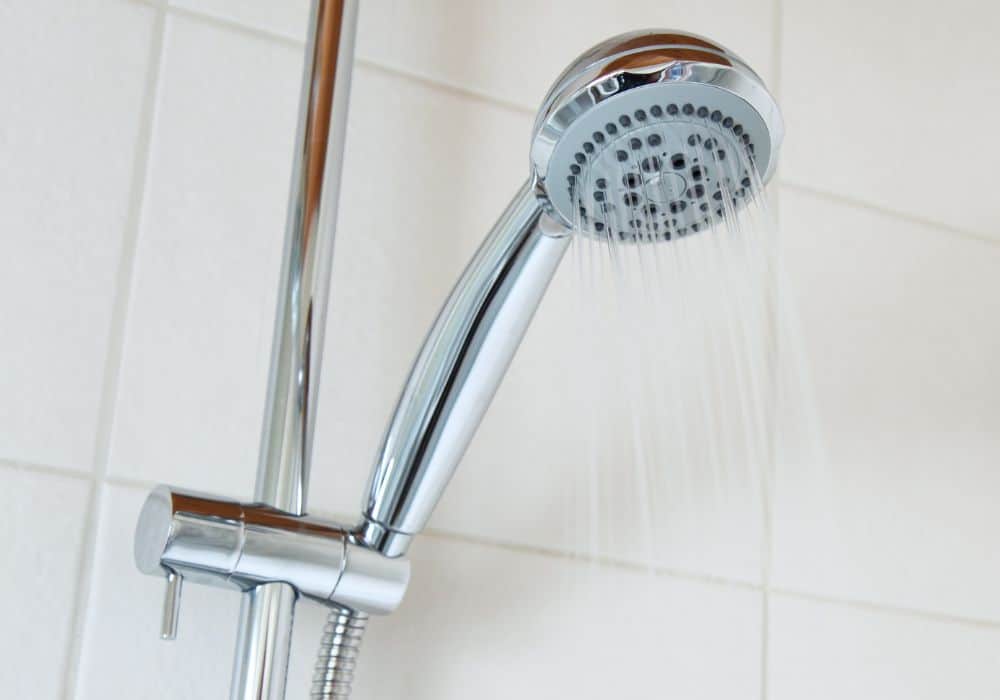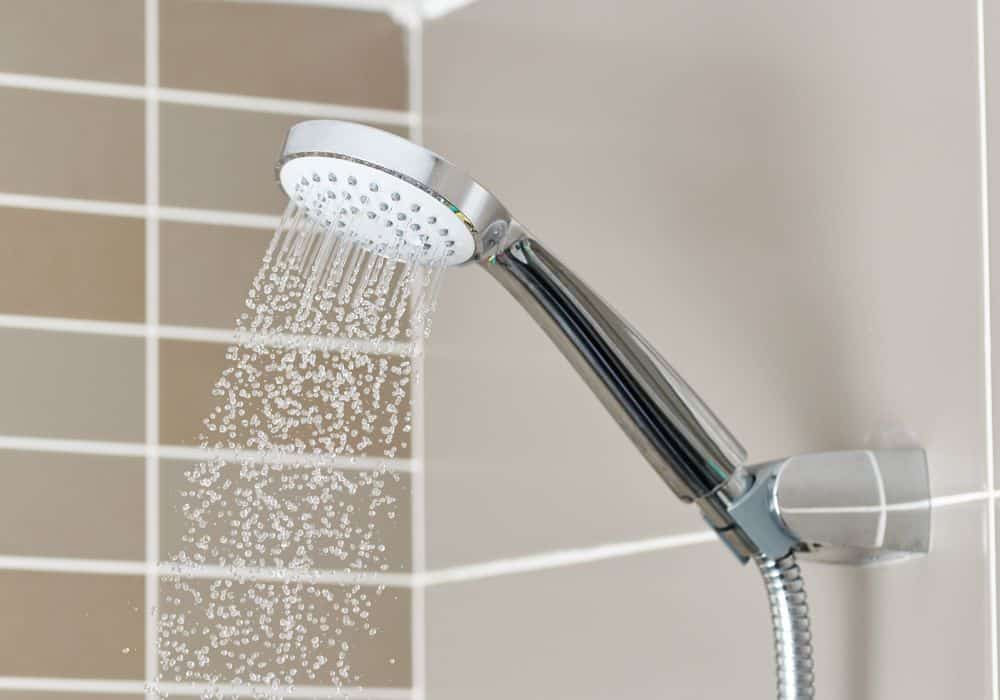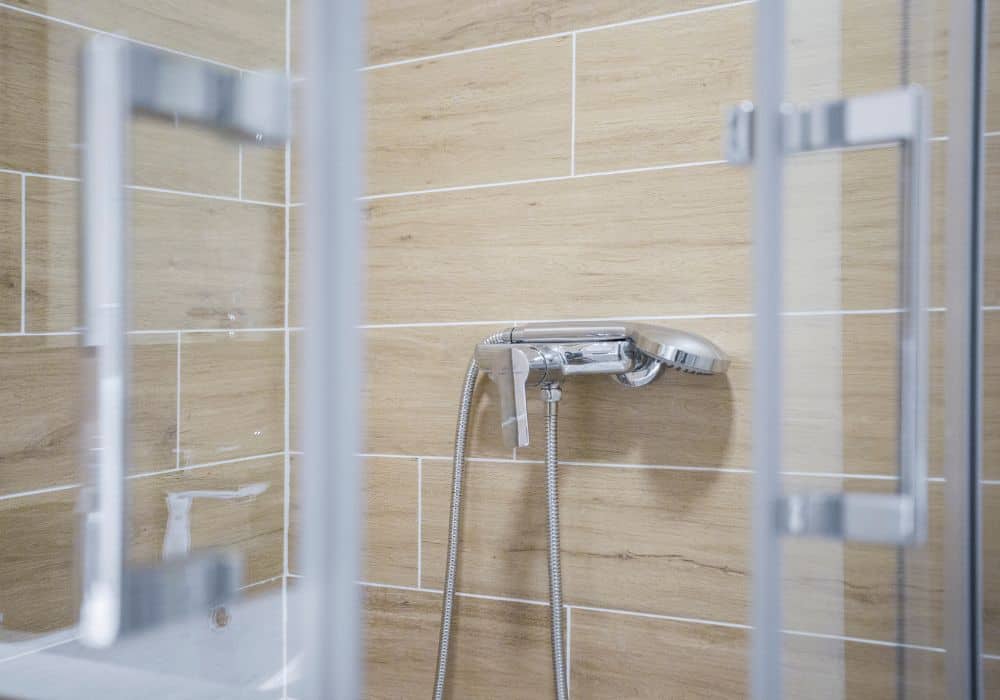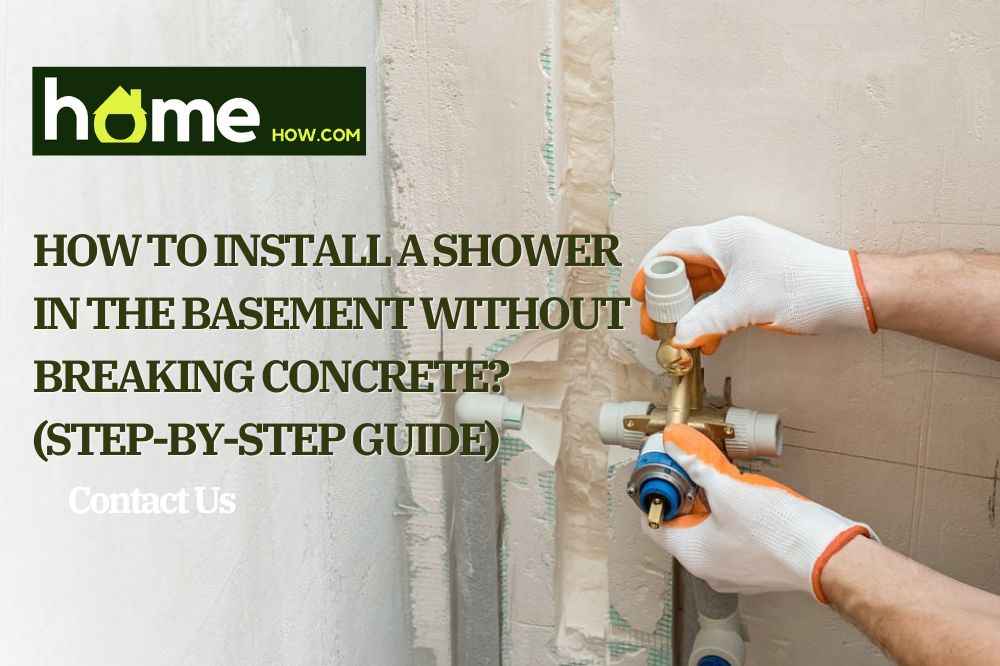Are you looking to add a basement shower – without damaging your concrete floors? While this may seem impossible, you can do it – quickly!
And since you just need to put things on top of your existing structure, you also get to save some money.
So sit back, relax, and immerse yourself in this informative guide on how to install a shower in the basement without breaking concrete.
How to Install a Basement Bathroom Shower Without Breaking Concrete
Tools and Materials Needed
- Framing lumber
- Saniflo upflush system
- Elevated shower base (or a DIY frame made from treated lumber)
- PVC pipe
- PVC adhesive
- Vents
- Y-fitting/reducer fitting (as needed)
- GFCI outlet
The best way to go about this is to use an up-flush drainage system. As the name suggests, it brings sewage waste up – so you don’t need to break the concrete floors and/or run drains.
While this technology may seem new, it has been around since the 1950s. In fact, Saniflo – the company behind this ingenious invention – has been manufacturing up-flush toilet systems for the European market for decades.
It’s no surprise why many Europeans – and now, global citizens – are fond of using it. There are many advantages to using it, after all. They include:
- Smaller discharge line. It’s easier to fit into smaller places compared to a bigger main drain line.
- Anywhere installation. You don’t have to try to align your basement shower with your existing drain line. You can install it wherever you want.
According to this guide, here’s how to proceed with the installation:

1. Install the Pump/Macerator
Set the pump or macerator behind the wall frame. It should be at the level of the shower floor. Place the rubber feet to help secure the pump on the ground.
In the context of up-flush systems, the pump or macerator works like a garbage disposal. That’s because all the waste channeled through it is reduced to fit the 3/4-inch water drainage pipe.
Tip: If you live in a cold area, allot some space between the pump and the wall to make way for insulation. This will help reduce heat loss – and produce hotter water (about 2°F–4°F more than uninsulated pipes.)
Furthermore, the insulation will help muffle the noise coming from the pump or macerator,
2. Put the GFCI Outlet in Place
The Upflush system runs with the help of electricity. As such, you’ll need to install an outlet – ideally GFCI – near it.
A good thing about GFCI outlets is that they protect you – and the other users – from electrical shock. Likewise, it can reduce the risk of fires caused by the electric current interruption.
For best results, place the GFCI outlet inside the wall framing. Situate it near the pump, ideally facing the room. Likewise, it should be situated within 12 inches of an access panel.
Tip: Before placing the outlet, check your local building codes for installation rules.
Speaking of codes, make sure to run by them before starting with the shower placement process. In most cases, your code may require obtaining a permit for such a project!

3. Place the Basement Shower Step-Up
You need to install an elevated shower base for the up-flush system to work. That’s because you need a slope of 1/4 inch per linear foot of pipe. Likewise, you must allot an area for the drain line P-trap underneath the shower.
All in all, you will need a standard slope of about 6 inches for your shower. This should be able to accommodate the International Residential Code (IRC) requirement, which states that the stall should be a minimum of 30 x 30 inches.
Likewise, it should be able to provide a clearance of at least 24 inches.
Shower bases can cost anywhere from $190 to $1,200.
Tip: If you have low ceilings, installing an elevated shower base will drastically reduce headroom. In such cases, you may need to consider installing a tub rather than a shower.
Tip 2: As it will be hard to install an overhead lighting fixture in low-ceiling spaces, your best options for the basement are wall-mounted sconces or recessed fixtures.
4. Connect the Shower Drain
Hook the shower drain pipe, which captures the sewage and transports it into the drainage system into the wall. Turn the tube towards the pump with the use of an elbow.
The Saniflo system has drain ports on both sides. That’s why according to this video, you can install the shower, toilet, or sink wherever you want.
You can cover the other entrance with the provided cap if you only need to connect one – say, just the shower stall.
5. Install Proper Ventilation
Place a vent for each fixture on the drain line. Make sure to connect these vents and bind them to your existing ventilation system. By doing so, you’ll be sure to remove the odor and gases that could build up in your drainage system.
Again, make sure to follow the IRC requirements when installing your vents. It should be ducted to the outside, and it should be able to move at least 50 cubic feet of air per minute.
Tip: Use a free air vent for this scenario! This setup won’t work with a mechanical ventilation system that utilizes fans and ducts.
6. Link the Pump and the Discharge Pipe
Place the discharge tube onto the pump port. Make sure to install a hose clamp, which will help keep the line in place.
You can also install a shutoff ball valve to prevent backflow if you have to detach the pump.
Tip: You can do one 90-degree turn from the pump. The rest of the turns should be sweeping, which you can achieve with two 45-degree elbows or a sweep elbow.
7. Connect the Main Sewer Line With the Discharge Pipe
Your discharge line can run horizontally for 18 inches before it goes vertically. The line can run horizontally again after this turn, but it shouldn’t make a subsequent vertical/horizontal turn.
Considering this, the pump run should be at least 3 feet.
When connecting the discharge to the main line, using a reducer fitting on a cleanout is the best thing to do.
If you can access the cleanout easily, you can connect the discharge pipe directly. Just detach the plug and use a reducer to join the said pipe.
If this is not feasible, you can place a Y-fitting on a horizontal-run pipe. However, you need to make sure that the discharge pipe enters from the side or top. Likewise, you should refrain from feeding any other pump line into the discharge pipe.
For steel pipe drains, installing a Y-fitting and securing it with mission clamps will also work. However, you need to use the fully-banded type, not just those with hose clamps.

Adding a Basement Bathroom Shower: Pros and Cons
As mentioned above, you can easily add a shower stall without breaking your basement’s concrete. But if you’re still on the fence about this project, then this list of pros and cons should help you decide:
Pros
- Increases the home’s value. Although you will need to spend some money on this project, it will benefit you in the long run. Just remember: a full bathroom can improve your house’s value by as much as 5.7%.
- Potential income source. If you have a big basement, adding a shower stall will help provide you with an income source. You can rent it out or list it on Airbnb, among many other options.
- Saves money (compared to traditional shower installation.)Using the Upflush system avoids concrete breaking. As a result, you don’t have to spend money on the tile floor, which can range anywhere from $900 to $3,000.
- If you’re always in the basement, you don’t have to go upstairs to take a bath. A shower stall in the area will make bathing – among many other things – convenient for you.
- Possible DIY project. Granted that you know the basics of plumbing and/or carpentry, you can install a shower stall on your own.
Cons
- Reduces basement space. Granted that you utilize your basement fully, installing a shower stall will reduce your current area.
- As mentioned, you will need to spend some money to install a basement shower. The up-flush system, for one, will cost you $1,300 and above. That does not include the cost of pipes, vents, etc.
- May require professional help. Although you can install the shower on your own, you will need to seek the help of electricians and whatnot if you’re incapable of doing so. Again, this will cost some money.
Conclusion
You can install a basement shower without breaking concrete – simply by following these doable steps:
- Install the pump/macerator
- Put the GFCI outlet in place
- Place the basement shower step-up
- Connect the shower drain
- Install proper ventilation
- Link the pump and the discharge pipe
- Connect the main sewer line with the discharge pipe
Have you done this project yourself? How did it go? Make sure to share your tips and techniques below!
